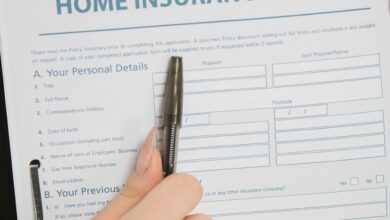How to Lower Your Home Insurance Premiums: A Comprehensive Guide

Homeowners insurance is an essential safeguard for protecting your most valuable asset—your home. However, the cost of premiums can sometimes feel burdensome, especially if you’re looking to save money without compromising on coverage. The good news is that there are several strategies you can employ to lower your home insurance premiums while still maintaining adequate protection. In this article, we’ll walk you through practical tips and actionable steps to help you reduce your costs and make your policy more affordable.
Why Are Home Insurance Premiums So High?
Before diving into how to lower your premiums, it’s important to understand what factors influence the cost of home insurance. Insurance companies calculate premiums based on a variety of elements, including:
- Location: Homes in areas prone to natural disasters (e.g., hurricanes, earthquakes, wildfires) or high crime rates typically have higher premiums.
- Home Value and Construction: The cost to rebuild or repair your home affects your premium. Older homes or those made with expensive materials may incur higher costs.
- Coverage Limits: Higher coverage amounts mean higher premiums.
- Deductibles: A lower deductible results in a higher premium, and vice versa.
- Claims History: Filing frequent claims can lead to increased premiums.
- Credit Score: In many states, insurers use credit scores as a factor in determining premiums.
By addressing these factors strategically, you can significantly reduce your home insurance costs. Let’s explore how.
1. Increase Your Deductible
One of the simplest ways to lower your home insurance premium is by increasing your deductible—the amount you pay out-of-pocket before your insurance kicks in. For example, raising your deductible from $500 to $1,000 could reduce your annual premium by 10% to 25%, depending on your insurer and policy.
Considerations:
- Ensure you have enough savings to cover the higher deductible in case of a claim.
- Avoid filing small claims; save them for major repairs or emergencies to prevent rate hikes.
2. Bundle Your Policies
Many insurance companies offer discounts if you purchase multiple policies from them, such as bundling your home and auto insurance. This practice, known as “multi-policy discounting,” can save you anywhere from 5% to 25% on your premiums.
Benefits of Bundling:
- Simplifies bill payments and management.
- Often comes with loyalty discounts over time.
- Strengthens your relationship with the insurer, which may result in better customer service.
Ask your insurer about bundling options and compare quotes to ensure you’re getting the best deal.
3. Improve Home Security
Insurance companies love when homeowners take proactive steps to protect their property. Installing security features can not only deter burglaries but also qualify you for significant discounts on your premium.
Examples of Security Upgrades:
- Smoke Detectors and Fire Alarms: These devices can reduce fire-related risks and earn you a discount.
- Smart Home Technology: Smart locks, cameras, and water leak detectors demonstrate responsibility and risk reduction.
- Security Systems: Professionally monitored systems or DIY setups like Ring or Nest may qualify for up to 20% off your premium.
- Deadbolts and Reinforced Doors: Strengthening entry points reduces break-in risks.
Be sure to notify your insurer after making upgrades so they can adjust your policy accordingly.
4. Mitigate Natural Disaster Risks
If you live in an area prone to natural disasters, your premiums may reflect the added risk. Taking steps to mitigate these risks can help lower your costs.
Steps You Can Take:
- Windstorm Protection: Install storm shutters or reinforce your roof to minimize damage during hurricanes or tornadoes.
- Flood Prevention: Elevate electrical systems, install sump pumps, or improve drainage around your foundation.
- Earthquake Retrofitting: Secure heavy furniture, anchor your home to its foundation, or retrofit older structures to withstand seismic activity.
While some of these improvements require upfront investment, they can lead to long-term savings on your premiums.
5. Maintain a Good Credit Score
In many states, insurers use credit-based insurance scores to assess risk. A higher score indicates financial responsibility, which translates to lower premiums. Here’s how you can maintain or improve your credit score:
- Pay bills on time.
- Keep credit card balances low relative to your credit limit.
- Avoid opening too many new accounts at once.
- Regularly check your credit report for errors and dispute inaccuracies.
Even small improvements in your credit score can lead to noticeable reductions in your home insurance costs.
6. Shop Around and Compare Quotes
Insurance rates vary widely between providers, so it pays to shop around. Don’t assume your current insurer is offering the best deal—compare quotes from at least three different companies every few years.
Tips for Comparing Quotes:
- Use online comparison tools to quickly gather quotes.
- Ensure each quote includes the same coverage limits and deductibles for an accurate comparison.
- Look beyond price; consider customer service ratings, claims handling, and reputation.
Switching insurers isn’t always necessary, but having competitive quotes gives you leverage to negotiate with your current provider.
7. Review and Update Your Coverage Annually
Over time, your home’s value, replacement costs, and personal belongings may change. If you’re overinsured, you could be paying for unnecessary coverage. Conversely, being underinsured leaves you vulnerable in the event of a loss.
Steps to Optimize Coverage:
- Reassess your dwelling coverage to ensure it reflects current rebuilding costs, not market value.
- Adjust personal property coverage to account for changes in your possessions.
- Remove coverage for items you no longer own (e.g., jewelry, electronics).
An annual review ensures your policy aligns with your needs and budget.
8. Take Advantage of Discounts
Most insurers offer a variety of discounts that can add up to substantial savings. Some common discounts include:
- Loyalty Discounts: Staying with the same insurer for several years often earns you a reduced rate.
- New Roof Discount: Replacing an old roof with impact-resistant materials can qualify for a discount.
- Non-Smoker Discount: Non-smoking households pose less fire risk and may receive lower premiums.
- Retirement Discount: Seniors or retirees who spend more time at home may qualify for reduced rates due to increased vigilance.
Ask your insurer about all available discounts—you might be surprised by how much you can save!
9. Avoid Filing Small Claims
Filing too many claims, even for minor issues, can raise red flags with your insurer and lead to increased premiums—or worse, policy cancellation. Instead, consider self-insuring for smaller losses by setting aside an emergency fund.
When to File a Claim:
- Major structural damage (e.g., roof collapse, foundation issues).
- Catastrophic events (e.g., fires, floods).
- Liability claims involving injuries or lawsuits.
For minor damages, weigh the cost of repairs against your deductible and potential premium increases before deciding to file.
10. Work with an Independent Insurance Agent
Independent agents represent multiple insurers, giving them access to a broader range of policies and pricing options. They can help you find the best coverage at the lowest cost and advocate on your behalf during negotiations.
Benefits of Using an Agent:
- Expert advice tailored to your situation.
- Access to exclusive deals and promotions.
- Ongoing support for policy reviews and updates.
While working with an agent may involve a commission fee, the savings they secure often outweigh the cost.
Final Thoughts: Saving Without Sacrificing Coverage
Lowering your home insurance premiums doesn’t mean skimping on coverage—it means being strategic about how you manage your policy. By implementing the tips outlined above, you can achieve significant savings while ensuring your home remains protected against unforeseen events.
Remember, the key to finding affordable home insurance lies in staying informed, proactive, and willing to explore your options. Start by reviewing your current policy, shopping around for better rates, and taking advantage of available discounts. With a little effort, you can enjoy peace of mind knowing your home is both well-protected and budget-friendly.




